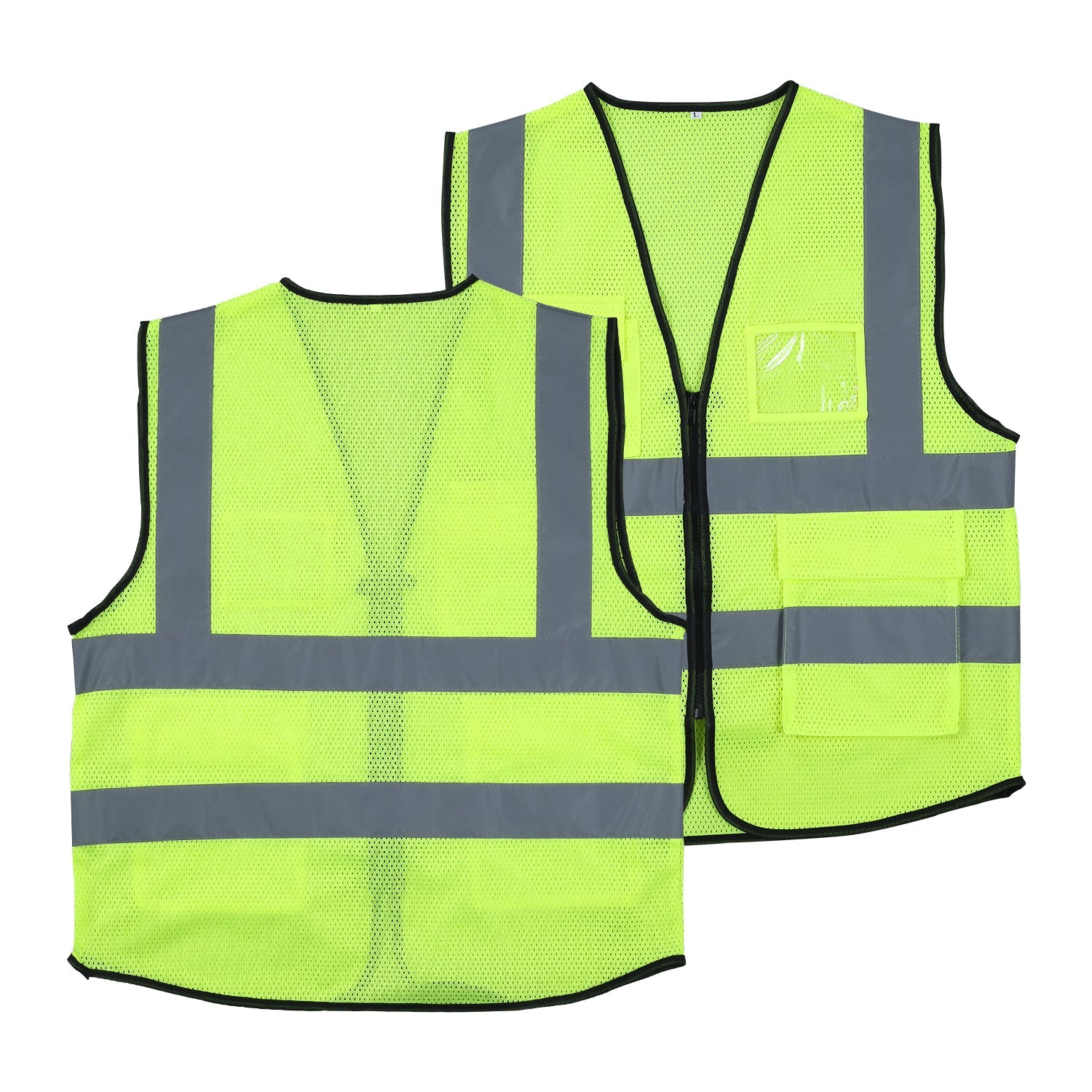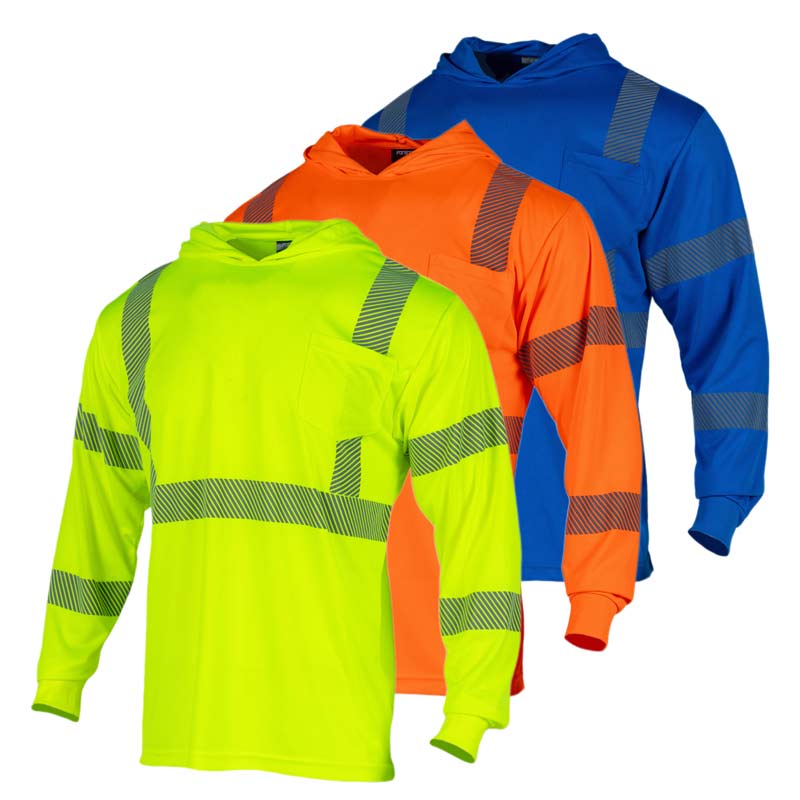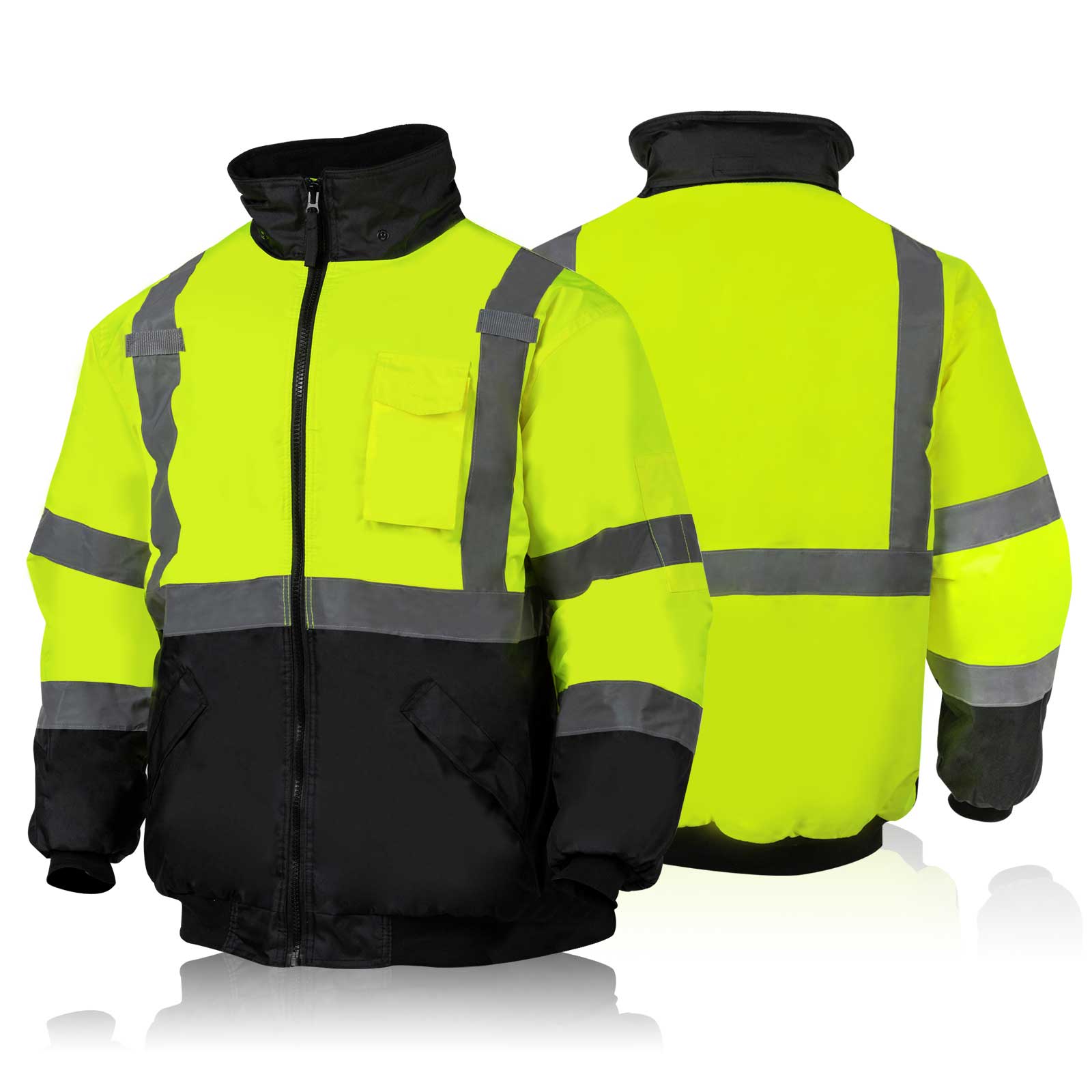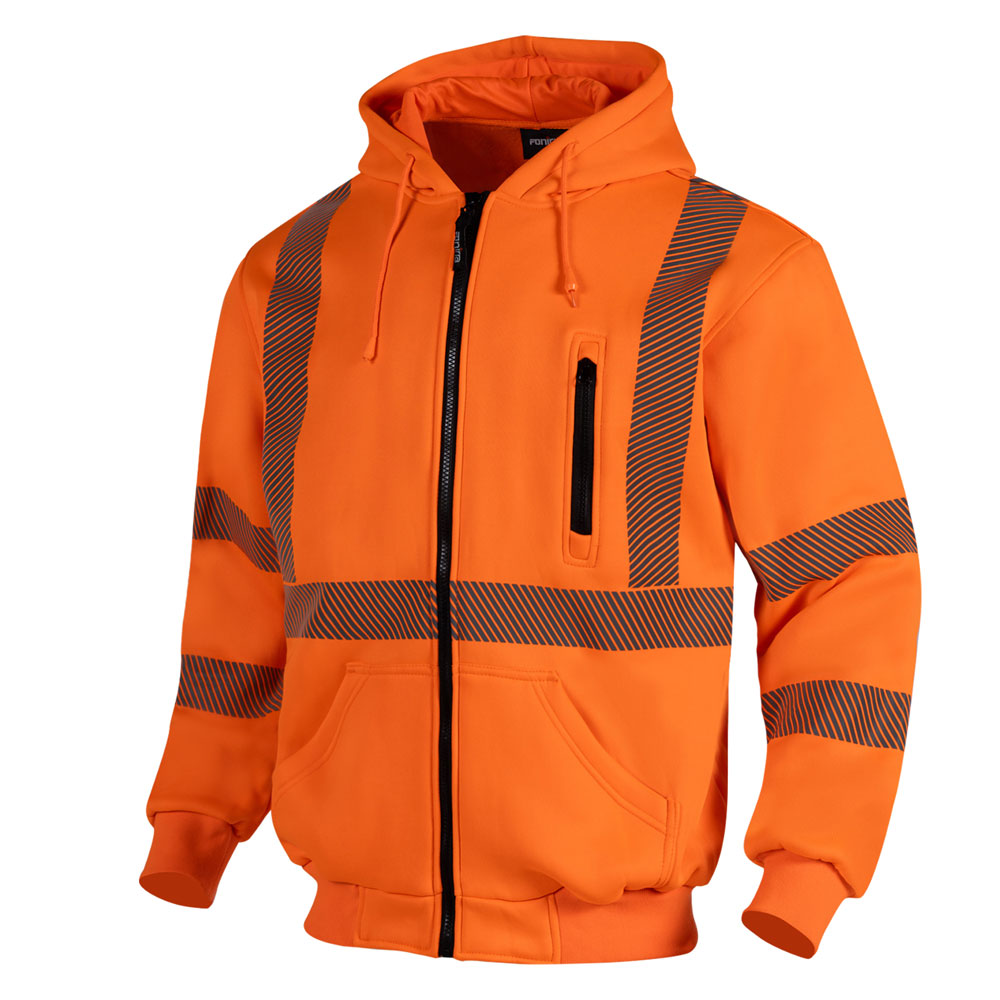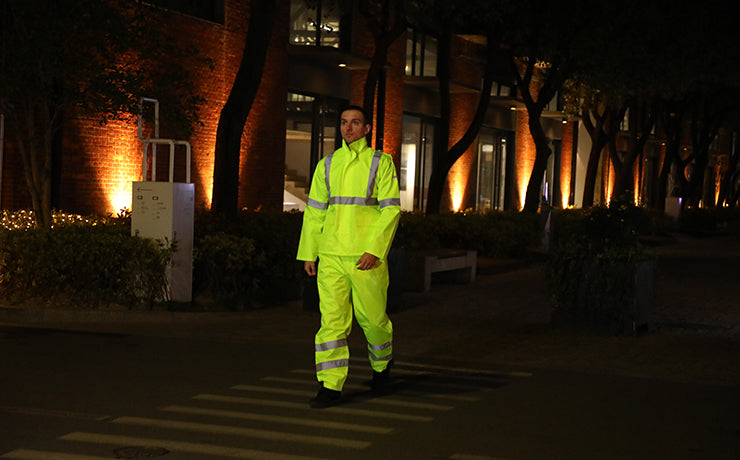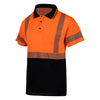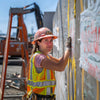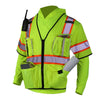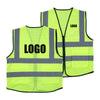Fire Retardant Clothing For Workers: 5 things you need to know before purchasing
When it comes to safety at work, especially in jobs where fire is a risk, the right clothing can make a big difference. Fire retardant (FR) clothing is becoming more and more important across various industries. It’s not just about wearing something; it's about wearing something that can protect you against fire.
With more people realizing how crucial these clothes are, there's a growing need for fire-resistant gear. Whether you're a safety manager in the oil and gas industry, an electrician, or a construction worker, this article will provide you with crucial insights and considerations to ensure that your choice in fire retardant clothing not only meets regulatory requirements but also offers optimal protection and durability in the face of extreme conditions.
Table of contents:
- Fire Retardant vs. Fire Resistant
- Material Matters: What Makes Clothing Fire Retardant
- Maintenance and Care of Fire Resistant Clothes
- Legal and Compliance Aspects
- The Cost Factor: Investment vs. Safety
- Conclusion
1. Fire Retardant vs. Fire Resistant
What is Fire Retardant Clothing?
Fire retardant clothing is specially made to resist burning or catching fire. When these clothes come into contact with fire, they are designed to self-extinguish.
This means that the fire will go out by itself, often preventing serious burns. It’s like having a safety shield made of fabric. These clothes are treated with chemicals that help stop the fire from spreading.
What is Fire Resistant Clothing?
Fire resistant clothing, on the other hand, is made of materials that are naturally harder to catch fire. Unlike fire retardant clothing, they are not treated with chemicals. Instead, they are made of materials that are naturally slow to burn.
If these clothes do catch fire, they burn slowly, giving the person wearing them more time to escape or put out the fire.
Flame Resistant Meaning in Workplace Safety
Understanding 'flame resistant' is key for workplace safety. Whether it’s fire retardant or fire resistant, these clothes are all about protecting people from fire. Along with fire retardant clothing, it's essential to wear safety glasses and hard hats in high-risk jobs to ensure comprehensive protection.
They are especially important in jobs where there’s a high risk of fire, like in welding or electrical work. Wearing the right kind of clothes can prevent serious injuries and even save lives.
2. Material Matters: What Makes Clothing Fire Retardant?
The secret to the power of fire-retardant clothing lies in its materials. Common materials used include treated cotton and nomex.
-
Treated cotton is regular cotton that has been treated with special chemicals that make it fire-resistant.
-
Nomex, on the other hand, is a high-strength material that is naturally resistant to fire. It doesn’t melt or drip and is self-extinguishing.
How Materials Prevent or Slow Down Fire?
These materials work in different ways to keep you safe.
- Treated cotton, with its fire-retardant chemicals, creates a barrier against fire. It stops the fire from getting more oxygen and spreading.
- Nomex, due to its strong structure, doesn’t catch fire easily and can withstand high temperatures without breaking down.
Both these materials are about slowing down the fire or stopping it, giving people valuable time to react and stay safe.

FR Rating in Fire Retardant Clothing
When we talk about fire retardant clothing, the FR rating is a crucial aspect to understand. This rating is a measure of how well the clothing can protect against specific heat and fire-related hazards.
It's important because it helps you choose the right level of protection based on the specific risks in your workplace. Different jobs and industries have varying levels of fire risk, so the FR rating helps ensure that workers are adequately protected.
Different FR Standards and Certifications
NFPA StandardsThis is a standard set by the National Fire Protection Association. It focuses on garments for protection against flash fire. It outlines the minimum design, construction, and certification requirements for flame-resistant clothing.
This standard is particularly crucial in industries where workers are at risk from short-duration thermal exposures.
- NFPA 2113
This standard complements NFPA 2112 by focusing on the proper selection, care, and maintenance of flame-resistant garments. It's about ensuring the ongoing effectiveness of FR clothing by guiding how they should be used and maintained.
ASTM Standards
-
ASTM F1506: Pertains to the performance specification for textile material for apparel exposed to electrical arc and related thermal hazards.
-
ASTM F1891: Standard specification for arc and flame resistant rainwear.
-
ASTM F1930: Standard test method for evaluating flame-resistant clothing for protection against flash fire simulations using an instrumented manikin.
-
ASTM F2733: Standard specification for flame-resistant rainwear for protection against flame hazards.
OSHA Standards
-
OSHA 1910.269: Covers the operation and maintenance of electric power generation, control, transmission, and distribution lines and equipment.
-
OSHA General Duty Clause: Requires employers to provide a workplace free from recognized hazards.
These standards and certifications play a crucial role in ensuring the safety and reliability of fire retardant clothing.
Each standard has its specific focus, whether it's electrical safety, visibility, or protection against flash fires, making them essential in different work environments.
Related: The Importance of FR Ratings in Jackets and How to Choose the Right One for Your Needs
3. Maintenance and Care of Fire Resistant Clothes

Proper maintenance, washing, and care of FR clothing are crucial to ensure they continue to provide the necessary level of protection and extend their usability. Here are some tips based on information from Tyndale USA, Occupational Health & Safety, and LAPCO FR:
-
Washing Temperature: Launder garments at a "warm" temperature to minimize shrinkage. For heavily soiled garments, use the hottest temperature allowed on the care label (usually warm) to remove dirt. FR garments can be dry-cleaned when necessary.
-
Laundering Options: Home laundering is often recommended as it ensures longer garment life and greater convenience. However, industrial laundering might be necessary for extremely soiled garments.
-
Avoid Bleach and Peroxide: Bleach or peroxide can degrade the FR properties of the fabric. It's important not to use these products for laundering FR clothing.
-
Dealing with Odors and Stains: If a garment has a lingering smell of oil or solvents, rewash it until the odor is gone. Visible stains might not impact the garment's safety, but persistent odors might indicate the presence of flammable substances.
-
Avoid Additives: Do not use fabric softeners, starch, or any additives that could build up and impede the FR performance of the garment.
-
Hard Water Concerns: Repeated washing in hard water can lead to mineral buildup, which could ignite. Consider using a water softener if hard water is an issue.
-
Separate Washing: Wash FR garments separately from other clothing to avoid cross-contamination and to maintain their protective qualities.
-
Inside Out Washing: Wash FR garments inside out to improve color retention and preserve appearance.
-
Drying Tips: Tumble dry on low settings and avoid overdrying. Remove the garment from the dryer while still damp to minimize shrinkage.
-
Repairs and Damage: If FR clothing is damaged, it can be repaired using flame resistant fabric and thread, as long as the repair maintains the garment's FR integrity. Retire any FR garment with significant damage, like a hole larger than a quarter or a rip longer than 3 inches.
Improper care of FR clothing can significantly affect its fire resistance. Using incorrect cleaning agents like bleach, or adding fabric softeners, can reduce the effectiveness of the flame-resistant properties.
Additionally, failure to remove contaminants like oil or solvents can turn the garment itself into a hazard. Regular inspection and proper laundering are key to maintaining the safety and integrity of FR clothing.
Related: Hi-Vis Clothes Cleaning Guide: How to Wash, Dry & Remove Stains
4. Legal and Compliance Aspects
When it comes to the use of fire-resistant (FR) clothing in the workplace, there are key regulations and standards that employers must adhere to, primarily mandated by the Occupational Safety and Health Administration (OSHA) and other safety standards.
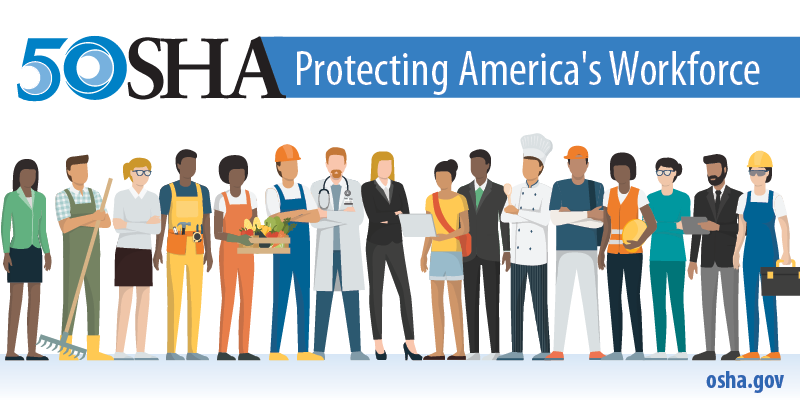
source: U.S. Department of Labor
General Duty Clause (OSHA Act of 1970):
This foundational principle requires employers to ensure a safe working environment free of known hazards, including fire-related risks.
29 CFR 1910.269:
This specific regulation mandates that workers must wear FR clothing that protects against burns from electric arcs or flames when working in hazardous conditions.
It also requires that the outer layer of clothing, except for certain items like head, hands, and feet coverings, must be flame-resistant under specific conditions such as exposure to circuit parts operating at more than 600 volts, or risk of ignition from electric arcs or molten metal.
29 CFR 1910.132:
This rule stipulates that employers must provide personal protective equipment (PPE), including FR clothing, at no cost to employees working in relevant industries.
Additional Standards and Practices
-
ASTM and NFPA Standards: These include various standards like NFPA 2112 and ASTM F1506, which provide guidelines on the performance requirements for FR clothing.
-
Conditions for Using FR Clothing: Employers must ensure that FR clothing is used in situations where there's a risk of exposure to flames or electric arcs, as specified by OSHA's revisions to 29 CFR 1910.269 and 1926 Subpart V.
Employer Responsibilities
-
Provision of FR Clothing: Employers are required to provide FR clothing to employees at risk of exposure to fire hazards at no cost.
-
Laundry and Maintenance: Employers have the responsibility to ensure that the laundering and maintenance of FR clothing do not compromise its protective properties. This can mean either handling the cleaning of such clothing themselves or training employees in proper laundering techniques if they are to wash their work gear at home.
-
Training and Compliance: Employers must train their employees on the proper use of FR clothing and ensure compliance with OSHA standards.
-
Inspection and Repair: Regular inspection of FR clothing for damage and proper repair using flame-resistant materials is necessary to maintain the protective integrity of the clothing.
It's important for employers to be thoroughly familiar with these regulations and standards to ensure both compliance and the safety of their employees.
The specifics can vary based on industry and risk factors, so a detailed understanding tailored to the workplace environment is crucial.
Related: The Most Common OSHA Guidelines Violated by Employers
5. The Cost Factor: Investment vs. Safety
When considering the purchase of quality flame-resistant (FR) clothing, it's important to understand the typical cost range and weigh it against the investment in safety.
Typical Cost Range for Quality FR Clothing
The cost of FR clothing can vary widely based on the type, material, and specific safety requirements it meets. Here are some general price ranges:
-
Basic FR Workwear: Simple FR shirts and pants can range from $50 to $150 each. These are usually suitable for minimal risk environments.
-
Specialized FR Garments: More specialized items, like FR coveralls or jackets, can cost anywhere between $100 and $300, depending on their specifications.
-
High-End and Customized FR Clothing: For garments designed for high-risk environments, or those that are customized for specific industrial needs, prices can exceed $300 per item.
Investment in Safety vs. Cost
While the cost of FR clothing may seem high initially, it's essential to consider this as an investment in safety rather than just an expense. Here’s why:
-
Prevention of Serious Injuries: FR clothing is designed to protect workers from severe burns and injuries. The cost of the clothing is often far less than the medical costs, lost productivity, and potential legal implications associated with workplace burn injuries.
-
Compliance with Safety Regulations: Many industries require FR clothing as part of compliance with safety regulations. Non-compliance can result in fines and legal issues.
-
Longevity and Durability: Quality FR clothing is typically more durable and has a longer lifespan than regular workwear, making it a cost-effective choice in the long run.
-
Peace of Mind: Knowing that employees are protected can improve morale and productivity, as workers feel safer and more valued in their workplace.
Balancing Cost and Safety
Some companies offer discounts for bulk purchases or have rental programs for FR clothing, which can reduce the overall cost.
Taking good care of FR clothing, adhering to proper washing and maintenance guidelines, can extend its life, providing better value over time.
Ultimately, the cost of FR clothing should be viewed in the context of its role in ensuring worker safety. Cutting corners on safety gear can have far more costly consequences.
Looking to buy high-quality Fire Retardant Work Clothes?
Fonirra is a professional supplier of high-visibility clothing and safety uniforms, including a vast selection of flame-resistant (FR) clothing. Our product line caters to various industry needs, offering items like high-visibility shirts, jackets, sweatshirts, raincoats, and specifically FR clothing. Fonirra offers a secure shopping cart on their website, making your purchase experience safe and convenient.
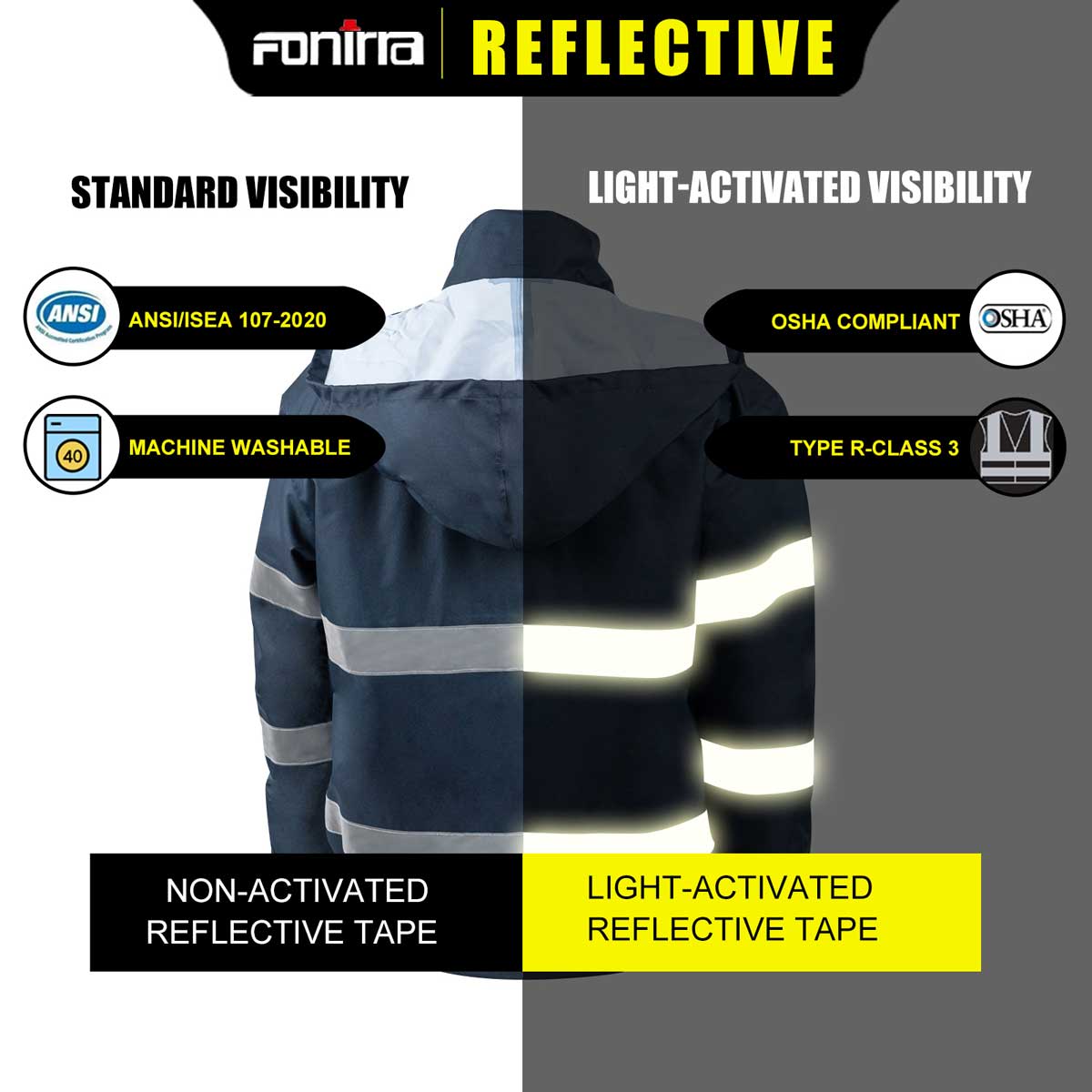
We emphasize safety and visibility for construction professionals and other workers in hazardous environments. Our apparel is designed to meet various safety standards, including ANSI/ISEA for the US market, EN ISO20471, and EN1150 for the European market, as well as AS/NZS standards for the Australian market.
Our website showcases a variety of safety apparel suitable for different seasons and working conditions, highlighting features like water and windproof materials, breathability, and thermal integration for cold weather conditions.
Making an Informed Decision: What to Look for When Purchasing

When purchasing flame-resistant (FR) clothing, it's crucial to make an informed decision. Here's a comprehensive checklist to guide buyers:
-
Certification and Compliance: Ensure the FR clothing meets industry standards like NFPA 2112, NFPA 70E, or ASTM F1506. Check for labels or documentation proving compliance.
-
Fabric Type: Understand whether the fabric is inherently flame-resistant or treated to be so. Common materials include Nomex, modacrylic, and flame-resistant treated cotton.
-
Fit and Comfort: Choose lightweight fire-retardant clothing for greater comfort, especially when working in physically demanding environments.
-
Durability: Check the garment’s build quality and resistance to wear and tear. Durable clothing can withstand regular washing without losing its FR properties.
-
Maintenance Requirements: Look into the washing and care instructions. Avoid fabrics that require special maintenance or lose their FR properties with regular laundering.
-
Protection Level: Match the garment's protection level (like its Arc Thermal Performance Value or ATPV) to the specific hazards of your workplace.
-
Design and Functionality: Consider features like pockets, zippers, and reflective elements for functionality and visibility.
-
Climate and Working Conditions: Choose clothing suitable for your work environment, whether it's insulated for cold weather or breathable for hot conditions.
-
Cost vs. Value: Evaluate the cost against the garment’s life expectancy, safety features, and compliance with regulations.
-
Brand Reputation and Reviews: Research the brand’s reputation and read customer reviews for real-world insights into the clothing's performance.
-
Size Availability and Fit: Ensure a wide range of sizes is available to accommodate all workers, and check if the brand offers women's and men's specific fits.
-
Warranty and Customer Support: Look for products with a warranty and consider the manufacturer's customer support for future queries or issues.
Remember, the right FR clothing not only complies with safety standards but also fits well, is comfortable, and suits your specific work environment.
Conclusion
Choosing the right fire retardant work clothes is crucial for workplace safety. This article has covered key factors to consider, from understanding the difference between fire retardant and fire-resistant clothing to the importance of FR ratings, material selection, and maintenance.
We also emphasized compliance with legal standards and provided a handy checklist for buyers. Remember, investing in quality FR clothing is an investment in safety, ensuring protection and peace of mind in hazardous environments.
-
Posted in
fire retardant, FR

